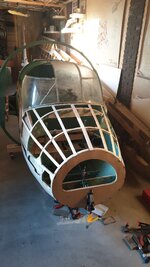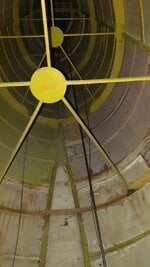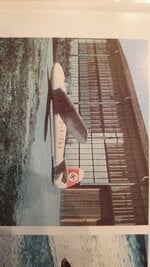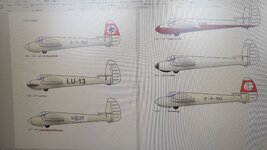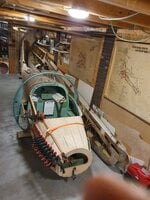Truffle Pig
Airman
It is well known that Germany increasingly used wood as a construction material in aircraft construction during WW2 and especially in the late stages of the war. In addition to the predominantly wooden aircraft, e.g. Ta 154, the He 162 or the prototypes of the Horten brothers, there were also various models in which only certain parts were made of wood. E.g. Bf 109, Me 110, Me 309, Me 410, Me 419, Me 262.
The reason for this was a temporary shortage of aircraft aluminum and metal aircraft builders, as well as an attempt to involve woodworking companies more in the armament effort. Unlike the actual aircraft industry, these often small companies and their qualified employees were scattered over a large area of the Reich and were therefore more difficult to eliminate by bombing. High-quality aircraft plywood, laminated wood and shaped beech wood served as an important raw material.
So much for the historical background.
During my research on the use of aircraft technologies and materials after the Second World War, I came across a few wooden suitcases, some of which were made of aircraft plywood. This can be recognized by the fact that the plywood complies with the specifications for aircraft plywood, i.e. it has, for example, more layers with the same thickness. In rare cases, a diagonal imprint can also be seen, which was applied at the time to prove compliance with the relevant specifications.
Fortunately, this also documents the year and calendar week in which the plywood was produced. Very occasionally, there is also uncoded information about the manufacturer.
The following pictures show some examples from cases of the years 1944 and 1945.

Detail of the print: Made in week 6, 1945.





A suitcase made short after the war by a company in southern Germany, which made wooden parts for several Messerschmitt models, but most for Bf 109. They were perfect in riveting wooden parts and made more than two thousand of these suitcases.
An example of a manufacturer's stamp of an aircraft plywood manufacturer from occupied denmark from another case:


What I am looking for now are photos showing such imprints on German aircraft and aircraft parts. Unfortunately, the probability is rather small, since these imprints were always applied to the inside of the plywood and will often also be covered by paint.
So if someone knows such pictures I would be glad about a hint.
The reason for this was a temporary shortage of aircraft aluminum and metal aircraft builders, as well as an attempt to involve woodworking companies more in the armament effort. Unlike the actual aircraft industry, these often small companies and their qualified employees were scattered over a large area of the Reich and were therefore more difficult to eliminate by bombing. High-quality aircraft plywood, laminated wood and shaped beech wood served as an important raw material.
So much for the historical background.
During my research on the use of aircraft technologies and materials after the Second World War, I came across a few wooden suitcases, some of which were made of aircraft plywood. This can be recognized by the fact that the plywood complies with the specifications for aircraft plywood, i.e. it has, for example, more layers with the same thickness. In rare cases, a diagonal imprint can also be seen, which was applied at the time to prove compliance with the relevant specifications.
Fortunately, this also documents the year and calendar week in which the plywood was produced. Very occasionally, there is also uncoded information about the manufacturer.
The following pictures show some examples from cases of the years 1944 and 1945.
Detail of the print: Made in week 6, 1945.
A suitcase made short after the war by a company in southern Germany, which made wooden parts for several Messerschmitt models, but most for Bf 109. They were perfect in riveting wooden parts and made more than two thousand of these suitcases.
An example of a manufacturer's stamp of an aircraft plywood manufacturer from occupied denmark from another case:
What I am looking for now are photos showing such imprints on German aircraft and aircraft parts. Unfortunately, the probability is rather small, since these imprints were always applied to the inside of the plywood and will often also be covered by paint.
So if someone knows such pictures I would be glad about a hint.

